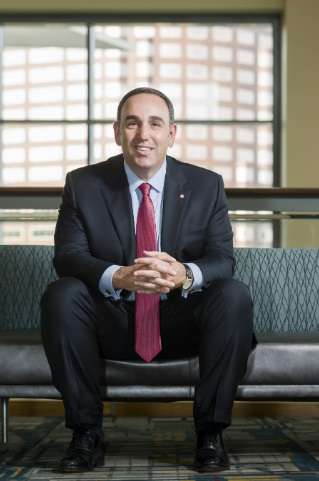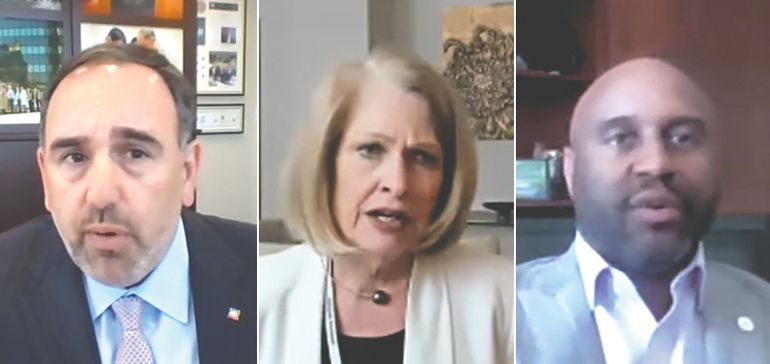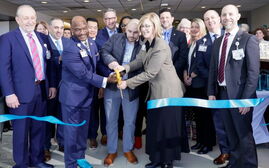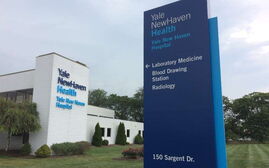
Processing Your Payment
Please do not leave this page until complete. This can take a few moments.
-
News
-
Editions
-
- Lists
-
Viewpoints
-
HBJ Events
-
Event Info
- 2024 Economic Outlook Webinar Presented by: NBT Bank
- Best Places to Work in Connecticut 2024
- Top 25 Women In Business Awards 2024
- Connecticut's Family Business Awards 2024
- What's Your Story? A Small Business Giveaway 2024 Presented By: Torrington Savings Bank
- 40 Under Forty Awards 2024
- C-Suite and Lifetime Achievement Awards 2024
- Connecticut's Health Care Heroes Awards 2024
-
-
Business Calendar
-
Custom Content
- News
-
Editions
View Digital Editions
Biweekly Issues
- April 29, 2024
- April 15, 2024
- April 1, 2024
- March 18, 2024
- March 4, 2024
- February 19, 2024
- February 5, 2024
- January 22, 2024
- January 8, 2024
- + More
Special Editions
- Lists
- Viewpoints
-
HBJ Events
Event Info
- View all Events
- 2024 Economic Outlook Webinar Presented by: NBT Bank
- Best Places to Work in Connecticut 2024
- Top 25 Women In Business Awards 2024
- Connecticut's Family Business Awards 2024
- What's Your Story? A Small Business Giveaway 2024 Presented By: Torrington Savings Bank
- 40 Under Forty Awards 2024
- C-Suite and Lifetime Achievement Awards 2024
- Connecticut's Health Care Heroes Awards 2024
Award Honorees
- Business Calendar
- Custom Content
CT hospital CEOs reflect on COVID-19 surge, look ahead to uncertain future
 The CEOs of three major Connecticut health systems during a recent virtual panel discussion hosted by the HBJ. (From left to right): Hartford HealthCare’s Jeffrey Flaks, Yale New Haven Health’s Marna Borgstrom, and Trinity Health Of New England’s Dr. Reginald Eadie.
The CEOs of three major Connecticut health systems during a recent virtual panel discussion hosted by the HBJ. (From left to right): Hartford HealthCare’s Jeffrey Flaks, Yale New Haven Health’s Marna Borgstrom, and Trinity Health Of New England’s Dr. Reginald Eadie.
The COVID-19 pandemic has caused massive human and economic suffering.
There’s been approximately 11,000 hospitalizations and more than 3,800 deaths in Connecticut, while job losses have skyrocketed nearly overnight to record highs.
If there’s a silver lining, the CEOs of three major Connecticut health systems say, it’s that their otherwise competitive institutions found common cause during the presumed worst of the crisis.
For example, as the virus hit Fairfield County, Yale New Haven Health (YNHH), Hartford HealthCare (HHC) and Nuvance (formerly Western Connecticut Health Network) combined forces to offtake patients from stressed hospitals, including independent Stamford Hospital, and even shared in-demand ventilators when there was a need.

“Lives were saved as a result of it and tragedies were avoided,” Hartford HealthCare Chief Executive Officer Jeffrey Flaks said during a mid-May hospital CEO webinar hosted by the Hartford Business Journal and New Haven Biz. “There are no uniforms during a pandemic.”
YNHH CEO Marna Borgstrom, who joined Flaks and Trinity Health Of New England CEO Dr. Reginald Eadie on HBJ’s virtual panel, said hospitals are typically competitive when it comes to their respective turf, but the coronavirus presented an unprecedented situation that required care providers to act in the common interest.
“If we planned for that, we might not have done it as well, but necessity is the mother of invention and we came together and did that well,” Borgstrom said.
As hospitals see their infected COVID-19 patient numbers continue to dwindle from their April peak, there’s plenty of damage to assess.
Borgstrom said frontline healthcare workers have been through the wringer — some were the only ones in attendance when patients died, due to visitation restrictions — and will need mental health support moving forward.
“They’ve seen things. They have been the only source of support in person for patients who have drawn their last breath,” she said. “Those are things that are going to impact our healthcare workers for a long, long time.”
Eadie said frontline workers will be the pandemic’s heroes in the history books.
“They’ve struggled a bit, and as a physician, I think I can empathize with them,” Eadie said. “I understand how difficult it would be during times like these to see so many lives lost in such a short period of time.”
The road ahead
Now, hospital leaders are looking forward, and they aren’t quite sure what to make of the future.
Like many businesses, any expectations hospitals had about revenues and bottom lines early this year have been blown up.
The Connecticut Hospital Association predicts its members will lose a combined $1.5 billion in the fiscal year that ends in September.
“Our balance sheets have been impacted like any other business because of what’s happened in the market, and our income statements are in tatters now and for the foreseeable future,” said Borgstrom, who said it’s too soon to pinpoint her own system’s losses just yet, but guessed they could be in the $350-million range, and HHC’s Flaks said his own projection is similar.
“I’ve been associated with the [Yale] system for 31 years, we’ve never lost money on the bottom line, we’ve come close, but we’ve never done it,” Borgstrom said. “We will lose money this year.”
The approximately $550 million in federal stimulus money that’s flowed to Connecticut hospitals thus far is nice, but it’s “just a drop in the bucket” compared to hospitals’ actual cost burdens and revenue losses, Eadie said.
“It was a public health crisis that turned into, to some degree, a financial crisis for some providers,” Eadie said. “There’s not going to be an easy way out of the current predicament that we’re in.”
The financial hit could impact future capital projects, as hospitals reevaluate the timing and practicality of big investments. For example, Yale has delayed construction of an $838-million neuroscience building in New Haven, while Flaks said HHC continues a $70-million expansion of the Bliss Building on its flagship Hartford campus. HHC announced in mid-March, just as the pandemic reached Hartford County, plans to move 700 employees to downtown Hartford as the main tenant at 100 Pearl St.
Flaks said HHC has “not pulled back on any of our commitments” but the system’s leaders are “evaluating everything as we go forward.”
“I do not want to understate the distress that this COVID-19 crisis has placed on our health systems,” he said.
Getting care
One of the key factors that will determine health systems’ ability to return to “normal” is how the public feels about going to the hospital for care.
Patients have been avoiding the emergency room during the pandemic to levels not previously predicted by hospital administrators. Besides the health impact on patients who avoid emergency care for strokes and other serious conditions, there are financial ramifications for hospitals, which pulled back on numerous elective procedures and surgeries starting in March.
Elective procedures are beginning to return at many hospitals, but Eadie has lingering worries.

“There’s still an element of fear in the community to come back into the hospitals,” he said.
Flaks agrees, and the stakes are high for hospitals to convince the public that everything is under control.
“We have a tremendous impetus to stand up our services, do it in a safe manner and really gain the confidence of our communities that we can take care of COVID-19 positive patients across Connecticut,” Flaks said.
Hospitals have taken plenty of safety measures to protect patients and staff, but Borgstrom says hospitals still have work to do in making the public feel safe.
“We will continue to take care of COVID patients but they will be in specific COVID units. The staff who care for them will be staff who support COVID-positive patients,” she said. ”We need to help people understand that the rest of the organization is clean, it’s safe, it’s welcoming.”
In the end, the pandemic’s presumed April 21 peak — when 1,972 COVID patients were being treated inside Connecticut’s hospitals — was tough for providers to weather, Borgstrom said, and the challenges are far from over, “but it wasn’t as histrionic as some had predicted.”
She credits Lamont’s partial stay-at-home order for that outcome.
Now, like most everyone else, hospital managers must make their best guess at what’s next, parsing epidemiological models that vary in their predicted scenarios, but some of which contain scary spikes in COVID-19 cases later this year in certain states.
“How do we build that into our planning and thinking so that we can be a part of the new normal as we approach the summer and fall?” Borgstrom asked.
Related Content

2022 Giving Guide
This special edition informs and connects businesses with nonprofit organizations that are aligned with what they care about. Each nonprofit profile provides a crisp snapshot of the organization’s mission, goals, area of service, giving and volunteer opportunities and board leadership.
Learn more
Subscribe
Hartford Business Journal provides the top coverage of news, trends, data, politics and personalities of the area’s business community. Get the news and information you need from the award-winning writers at HBJ. Don’t miss out - subscribe today.
Subscribe
2024 Book of Lists
Delivering Vital Marketplace Content and Context to Senior Decision Makers Throughout Greater Hartford and the State ... All Year Long!
Read Here-
2022 Giving Guide
This special edition informs and connects businesses with nonprofit organizations that are aligned with what they care about. Each nonprofit profile provides a crisp snapshot of the organization’s mission, goals, area of service, giving and volunteer opportunities and board leadership.
-
Subscribe
Hartford Business Journal provides the top coverage of news, trends, data, politics and personalities of the area’s business community. Get the news and information you need from the award-winning writers at HBJ. Don’t miss out - subscribe today.
-
2024 Book of Lists
Delivering Vital Marketplace Content and Context to Senior Decision Makers Throughout Greater Hartford and the State ... All Year Long!
ABOUT
ADVERTISE
NEW ENGLAND BUSINESS MEDIA SITES
No articles left
Get access now
In order to use this feature, we need some information from you. You can also login or register for a free account.
By clicking submit you are agreeing to our cookie usage and Privacy Policy
Already have an account? Login
Already have an account? Login
Want to create an account? Register
Get access now
In order to use this feature, we need some information from you. You can also login or register for a free account.
By clicking submit you are agreeing to our cookie usage and Privacy Policy
Already have an account? Login
Already have an account? Login
Want to create an account? Register










0 Comments